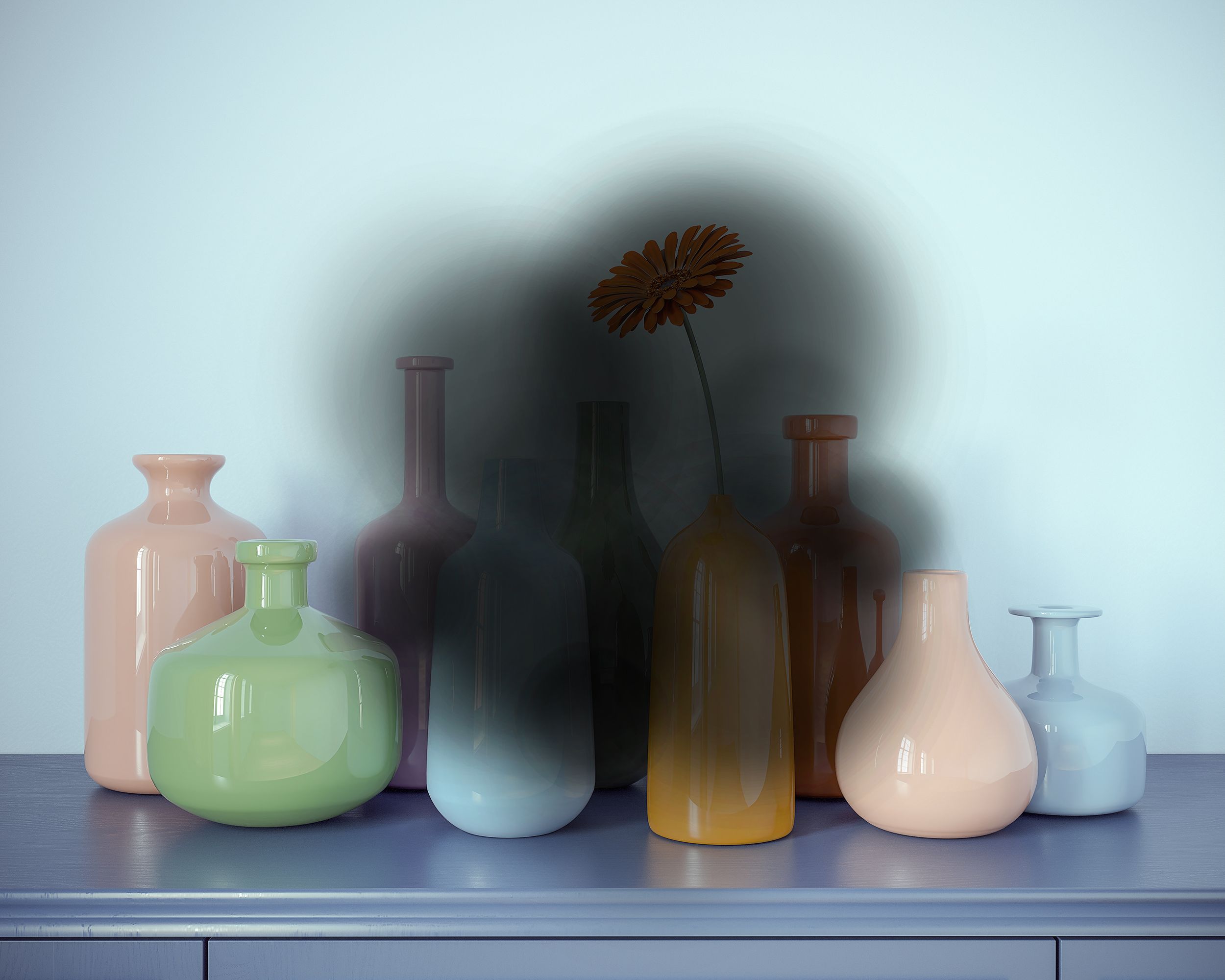An important part of taking care of your peepers is knowing what to do when they’re giving you trouble. Here’s how to handle common eye problems so you’ll be able to see clearly for years to come.
Allergies
When it’s allergy season or too many dust bunnies are hanging around the house, your eyes may become an annoying, irritated mess. Eye-related allergy symptoms:
- May cause white, stringy discharge
- Typically affect both eyes at the same time
- Include redness, swelling, or watering or intense itchiness or burning
- Develop while spending time outdoors or after having the windows open
What to do:
Step one is to “start taking your preventative or controller meds early," says allergist Dr Purvi Parikh. For spring that’s around August, while March is a good time for autumn] allergy season.
Wear glasses or sunglasses to help shield your eyes from pollen and other allergens when spending time outdoors, and change clothes (and ideally shower) as soon as you come inside.
Keeping windows closed on high-pollen days and running an air purifier can also help. Using eye drops may soothe discomfort. If nothing seems to do the trick, an allergist may recommend allergy shots to help desensitise you to allergens over time, Dr Parikh adds.
Eye infections
If bacteria get into your eyes or your eyes are exposed to a virus (often through respiratory droplets), that can cause an eye infection and trigger icky symptoms such as:
- Redness, itching, swelling
- Sensitivity to bright lights
- Pus or mucus-y discharge that can be yellow, green or white
- Eyes crusted together (especially upon waking)
- Pain or difficulty seeing
What to do:
First, see a doctor to figure out if the problem is bacteria- or virus-induced; for bacterial infections, you may need prescription antibiotic drops. Smart moves to prevent eye infections from becoming a regular thing include tossing old eye makeup and replacing eyeliner and mascara every three months to keep it from harbouring germs.
Always insert contact lenses with clean hands, and don’t sleep in them. Wash your hands frequently and try to avoid touching your eyes in general.
Digital eyestrain
Do you spend all day staring at a computer screen or your phone? If so, you’re probably familiar with the effects of digital eyestrain, such as:
- Dry or red eyes
- Blurry vision
- Non-eye-related symptoms such as headache and neck or back pain
What to do:
Blinking too little strains your eyes, so put a “Remember to blink” sticky note on your laptop where you won’t be able to miss it.
Follow the 20-20-20 rule throughout the day to relax and rewet your eyes; every 20 minutes, look 20 feet ahead of you (away from the screen) for 20 seconds.
Try matching screen brightness to ambient light. Position your laptop or phone so you’re looking slightly down at it rather than up or directly at the screen; this promotes eye relaxation, better blinking, and less tear evaporation, explains ophthalmologist Dr Annie Nguyen.
Dry eye
Yes, it’s true that dry eye is a symptom of many eye-related issues, but when your eyes lack essential components such as water, mucus, and oil, it can also be a problem on its own, says ophthalmologist Dr Ahmed Omar. You may experience sensations such as:
- Grittiness
- Dryness
- Blurry vision
What to do:
First, avoid exposure to things that make it harder for eyes to produce tears, triggering dry eye. These include excessive screen time without breaks, blowing air, and airborne irritants.
Over-the-counter artificial tears may help lubricate and soothe dry eyes. To ease your discomfort, try laying a clean washcloth soaked in warm water on your eyes or wearing a heated eye mask twice a day for 10 minutes.
Strange symptoms explained
Redness, swelling, and discomfort in the white part of your eye:
This could be episcleritis, a condition whose cause is often unknown that can be relieved with artificial tears, cold compresses, and oral nonsteroidal anti-inflammatory drugs such as ibuprofen, says glaucoma and cataract surgeon Dr Emily Schehlein. Persistent cases may require a short course of steroid drops. If episcleritis recurs frequently, it may be related to an auto immune condition or an infection.
Blurry or wavy vision:
Sometimes a thin film of fibrous tissue called an epiretinal membrane forms on the back of the retina, causing straight lines to look wavy. The only treatment is surgery to remove the tissue.
“It’s a delicate surgery, basically like peeling a piece of plastic wrap off the retina,” says ophthalmologist Dr Robert Latkany, “so we wait until it’s noticeably impacting vision.”
When eye problems get serious
These are the issues for which you are going to need a doctor and might even require surgery, but don’t stress, just get your eyes checked and learn what to look for.

Cataracts
“The lens in the eye is clear when we’re young, but over time it becomes cloudy and stiff,” notes Dr Schehlein. Both of these changes can decrease the quality of your vision; you may also experience glare, trouble reading or seeing into the distance, or difficulty driving at night.
Could this happen to you?
Getting older is the biggest contributing factor, but other risk factors include having an eye injury, a family history of cataracts, lots of exposure to UV light, or a chronic medical condition like diabetes; frequently using medications such as corticosteroids; and smoking.
A dilated eye exam will spot them, and your doctor will advise you as to how often you should have eye exams to monitor their progression.
What you can do:
“No one can completely prevent cataracts, but you can slow their progression by protecting your eyes from the sun,” Dr Schehlein says. “That means wearing sunglasses that block 100% of UV rays as well as wearing a hat.” And cataracts may not need to be treated at all if they’re not compromising your vision; a change in your eyeglasses prescription may be all that’s needed.
For more significant vision changes, surgery can be performed to remove the cloudy lens and put in an artificial one during a brief outpatient procedure. Afterward your doctor will prescribe eye drops to prevent inflammation and infection, says professor of ophthalmology Dr Alice Lorch.

Age-Related Macular Degeneration
This condition with a mouthful of a name is also referred to as AMD, and it occurs when the macula, a small area in the centre of the retina, is damaged, often simply due to the aging process.
There are actually two types of AMD, dry and wet. In the dry version, which is much more common, tiny deposits called drusen grow in the macula, affecting vision. With the wet version, abnormal new blood vessels form under the retina and can leak blood into the eye, explains Dr Lorch. The dry form sometimes, though not always, progresses to the wet form; you can also have a different form in each eye.
Could this happen to you?
The primary risk factors are being over 50, smoking, obesity, having a family history of AMD, and having had significant UV light exposure. Other risk factors include atherosclerosis, hypertension, and cholesterol abnormalities.
Both types of AMD can be discovered during a dilated eye exam and/or with an optical coherence tomography (OCT) scan, which produces a high-resolution cross-sectional image of the retina so an ophthalmologist can see each layer of the eye, explains retina specialist Dr Purnima S. Patel. “This can detect early forms of the disease as well as its progression.”
What you can do:
There’s currently no cure for either form of AMD, but there are ways to keep it in check. Dry and wet AMD are treated with nutritional supplements called AREDS that contain high doses of antioxidants (specifically, vitamins C and E, beta-carotene, zinc, and copper).
A recent review from the UK confirmed that people with AMD who take these supplements are less likely to have the disease progress. “These formulas are widely available, and no prescription is needed,” says professor of ophthalmology Dr Marguerite McDonald.
Wet AMD is treated with anti-VEGF (vascular endothelial growth factor) drugs that are injected into the eye (after it is numbed) to prevent the growth of abnormal blood vessels and stop progression. “Treating it on the sooner side leads to better outcomes,” Dr Lorch says.

Glaucoma
“While there are different types of glaucoma, the common denominator is damage to the optic nerve, usually due to elevated eye pressure,” explains ophthalmologist Dr Robert Latkany. The pressure usually results from fluid building up in the eye, often because of a blockage or another problem with the eye’s drainage system. “But because there are no early signs, glaucoma is often called ‘the silent thief of sight,’” says Dr Schehlein.
Could this happen to you?
Having a family history of glaucoma is a risk factor, as is being over 60, having increased eye pressure or thin corneas, being African American or Hispanic, using steroid medications long-term, and having a history of severe eye injury.
Nearsightedness (myopia) and the presence of certain medical conditions like diabetes and high blood pressure may also be associated with glaucoma. A recent study from South Korea suggests that people 40 and older who have chronic and severe migraine have a greater risk of developing open-angle glaucoma.
Fortunately, glaucoma can be detected with a comprehensive eye exam that includes measuring pressure in the eye, examining the optic nerve for damage, and inspecting the eye’s drainage angle as well as testing vision.
What you can do:
Once diagnosed, “glaucoma can often be controlled with eye drops to lower the pressure and protect the nerves,” Dr McDonald says. Also, there are two types of in-office laser surgery that allow fluid to drain from the eye so pressure stays low, and there are surgical approaches that can be very helpful as well.
Unfortunately, as of now damage from glaucoma can’t be reversed, but medicine and surgery can prevent further damage. Because glaucoma is symptom-free until it’s very advanced, having annual eye check ups is essential.

Diabetic Retinopathy
With this condition, blood vessels in the retina leak fluid or bleed, distorting vision. “People with diabetes can have elevated blood sugar levels that cause blockages or damage in blood vessels in the retina,” Dr Latkany explains.
“These blood vessels can wreak havoc in the back of the eye, leading to scarring.” If the scars cause the retina to pull away from the back of the eye, this is called retinal detachment, and it is a medical emergency because if not treated promptly it could lead to permanent vision loss.
Could this happen to you?
A significant number of people are at risk for diabetic retinopathy given that more than 1.3 million people in Australia have diabetes.
“It can happen with type 1 or type 2 diabetes,” Dr Lorch says, “and the longer people have diabetes, the more at risk they are.” It can be diagnosed through a dilated eye exam, Dr Patel notes, adding that those with diabetes “need an annual eye exam at minimum” to detect diabetic retinopathy early.
A hidden perk of these exams: the eyes provide a window into the body, allowing doctors to discern other diabetes- related damage that may be occurring. “The only place in the body where we can see blood vessels is the eye,” explains Dr Patel. “So if we see blood vessel damage in the eye, we can tell that there’s damage elsewhere in the body.”
What you can do:
Good management of blood sugar and blood pressure are the mainstays of treatment for diabetic retinopathy; in some instances this may even improve vision. Depending on the severity of the disease, anti-VEGF injections can reduce inflammation, stop progression of the problem, and improve vision, Dr Latkany says.









